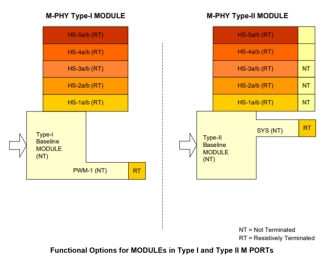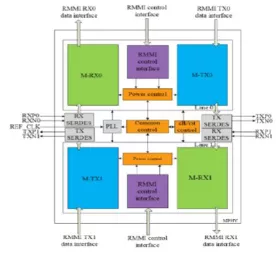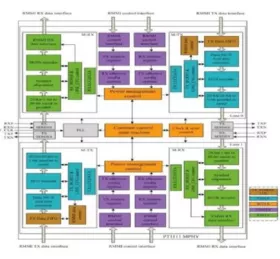MIPI M-PHY IP for TSMC
Welcome to the ultimate
MIPI M-PHY IP
for
TSMC
hub! Explore our vast directory of
MIPI M-PHY IP
for
TSMC
All offers in
MIPI M-PHY IP
for
TSMC
Filter
Compare
6
MIPI M-PHY IP
for
TSMC
from
4
vendors
(1
-
6)
Filter:
- 28nm
-
MIPI M-PHY IP
- The MIPI M-PHY is a high-frequency low-power, Physical Layer IP that supports the MIPI® Alliance Standard for M-PHY.
- The IP can be used as a physical layer for many applications, connecting flash memory-based storage, cameras and RF subsystems, and for providing chip-to-chip inter-processor communications (IPC).

-
MIPI MPHY v3.1, 2Tx-2Rx Type-1, TSMC 28HPC+, N/S orientation
- Supports RMMI interface for applications such as UNIPRO protocol (UFS, CSI-3, DSI-2) and DigRF
- High speed gears, HS-G1A/B, HS-G2A/B and HS-G3A/B with scalable power consumptions
- Burst mode CDR with short sync length (< 16SI)
- Low speed PWM Gears from G1 to G4 with ultra-low power consumptions

-
MIPI M-PHY v4.1 IP, Silicon Proven in TSMC 28 HPC+
- RX:DFE+CTLE, TX:2-tap FFE
- Max. Channel Loss:~14dB @6GHz Nyquist
- Low operation current and low standby current

-
MIPI M-PHY v3.1 IP, Silicon Proven in TSMC 28HPC+
- Compliant with M-PHY Spec 3.0
- Support HS-MODE Gear3(A/B) with data rate up to 5.8Gb/s, and backward compatible
- Support LS-MODE PWM-G1 to PWM-G4 with data rate up to 72Mb/s
- Support reference clock frequency with 19.2/26/38.4/52MHz defined in UFS spec

-
MIPI M-PHY HS Gear 4 IP
- Supports high speed data transfer G4A/B and backward compatible
- Multi-lane compatible
- Supports 4 reference clocks as per MIPI 4.1 specification
- PWM G1-G7 Signalling for Low Speed [LS] data
- Supports LS burst, HS burst, STALL, SLEEP, HIBERN8 states
- Supports squelch detection
-
MIPI M-PHY v3.1 IP in TSMC(12/16nm, 28nm, 40nm, and 55nm)
- Supports RMMI interface for applications such as UNIPRO protocol (UFS, CSI-3, DSI-2) and DigRF
- High speed gears, HS-G1A/B, HS-G2A/B and HS-G3A/B with scalable power consumptions
- Burst mode CDR with short sync length (< 16SI)
- Low speed PWM Gears from G1 to G4 with ultra-low power consumptions